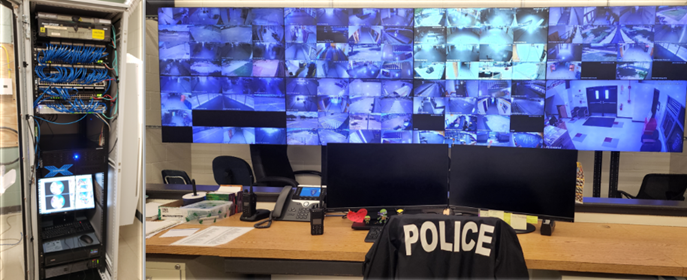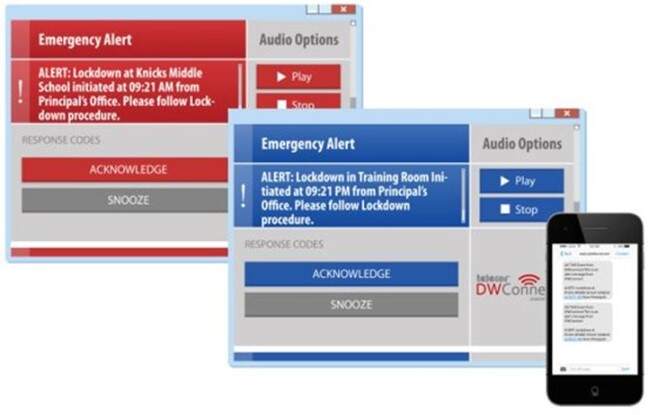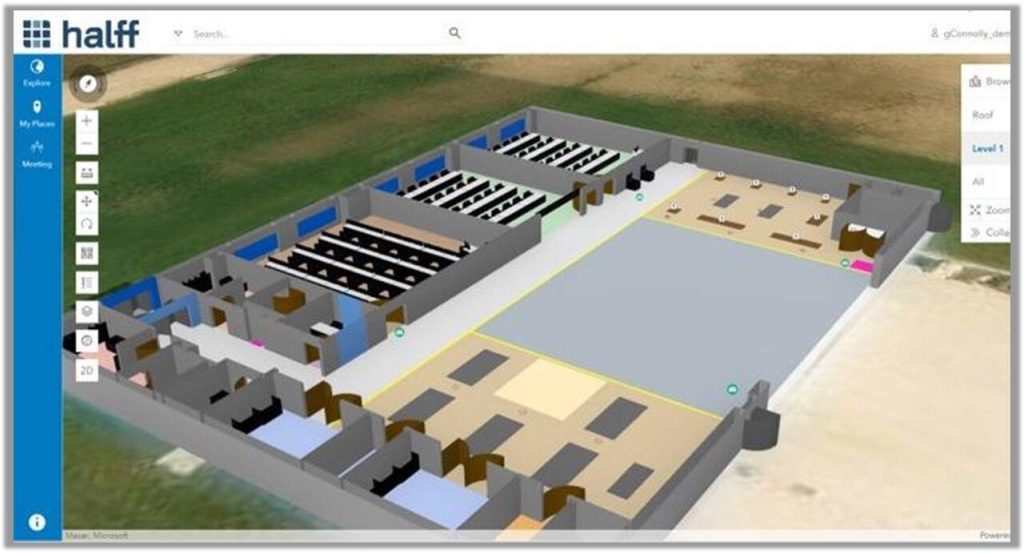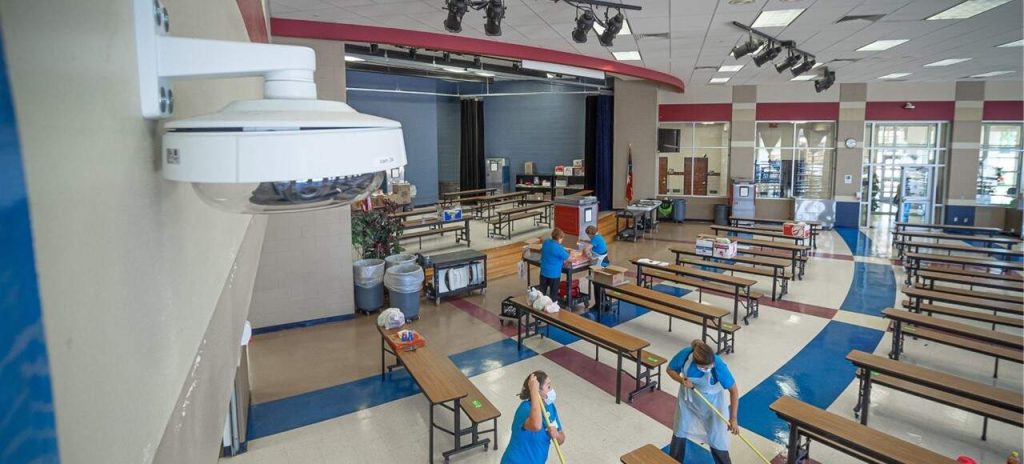Don’t Think Twice: Using Technology to Ensure School Safety
Our future generation’s safety hinges on things we can’t always see—security systems.
These safety systems within schools rely upon hundreds of technical operations, and one faulty system can cost a life.
Are your school safety systems sufficient to provide the safeguards teachers and students need?
Highlights
- ICT plays a dominant role in school safety systems; engineering as a service makes it happen.
- New technology such as AI gunshot detection, access-controlled doors and advanced indoor mapping will enhance and improve school safety.
- Halff’s ICT experts design a complete solution for systems so they will actually work smoothly.
Jump to Section:
- ICT’s Importance in School Safety
- What Technologies Improve School Safety?
- Indoor Mapping and Cybersecurity
- Opportunities for School Safety Improvement
- Everyone is a Stakeholder
ICT’s Importance in School Safety
School shooting incidents have been on the rise since the early 2000s, exploding in growth after the pandemic in 2020. These startling statistics highlight the importance of school safety.
The year 2022 reached a record-high 305 school shooting incidents, jeopardizing many lives. (Image source: K-12 School Shooting Database)
Information & Communication Technology (ICT) plays a dominant role in ensuring school safety. While the issue of school safety is simple to understand, implementing fully functional systems can be more complex.
Engineering as a Service (EaaS)
EaaS is the “how:” Halff offers engineering as a service, which delivers many crucial services for school safety systems. From electronic access controls and structured cabling to intercom systems, EaaS helps fill in the gaps to ensure systems integrate properly.
EaaS provides experienced engineers who have worked in the technology field, offering talent familiar with best practices. This might be a new thing in the electronic safety and security industry, but the benefits are endless with an engineering team that comes from an IT background and speaks that language.
What Technologies Improve School Safety?
School safety systems are becoming more robust with technology and impressive capabilities. Engineering as a service can be used for components such as surveillance, access controls, emergency notification systems design, cybersecurity and Next Generation 911 mapping.
Each one requires proper integration and testing.
Surveillance. Surveillance cameras and videos provide eyes on all rooms and areas. There must be secured climate control telecom racks and access-controlled cabinets.
Intelligent cameras can now use AI for gunshot and aggression detection, facial recognition, motion detection and more. This is accomplished by performing these analytics at the camera versus at the server. This minimizes bandwidth utilization and server contention.
Cameras are only one component of the solution. Having an industry-standard video management system that supports all the camera features allows full use the camera’s surveillance and analytic features. For example: imagine being able to remotely gain access to a school’s cameras from the Incident Command Center, and relay precise location and situational intelligence to a school’s administration, security office and law enforcement.
Access Control Systems. Having access-controlled doors on all entry points elevates safety from outside intruders and other unknown risks. They require system access administration and auditing to ensure compliance and proper function.
Integrating this system with the video management system provides both visual and physical security, and door administration. Elevating this functionality over an enterprise system allows for full administration across the campus, district and law enforcement. This would enable one to secure or release doors remotely, or gain access to a dedicated computer in a compromised area when a situation occurs.
Emergency Notification Systems. Real-time alerts can be triggered and sent to everyone in an instant, further strengthening school safety systems. A few seconds of time saved can save a life and prevent greater tragedy.
Many of these school safety designs are an expectation at the federal level, and Halff is delivering upon it.
Indoor Mapping & Cybersecurity
Indoor maps were historically very static with no versatility. Modern technologies now have updated mapping that is extremely dynamic, easy to update and more precise.
Advanced technology has provided a way for schools to use location intelligence in mapping, along with facility and asset management.
NextGen 911 is an ongoing effort to transition from traditional 911 systems to more advanced and integrated systems. The next generation of schools is calling for new-and-improved technologies. This means integrating text messages, videos and images into emergency response systems to enhance first responders’ situational awareness.
What Comprehensive Security Design Looks Like
Comprehensive security design leverages ICT on many fronts. It is helpful to stratify each component and identify “weak links” in your security system/design to ensure cybersecurity.
Cyber threats continue to escalate every year. The interconnected nature of modern technologies demands a proactive stance to create comprehensive and secure systems.
A robust design contains the following:
-
- Network and Data Security. Network and data security are paramount for school safety surveillance systems. Encryption protocols, secure access controls and regular audits ensure that sensitive information remains safeguarded.
- User Awareness and Training. Educating school staff, students and administrators about cybersecurity best practices fosters a culture of vigilance, making them the first line of defense against cyber attacks.
- Incident Response and Recovery. Incident response and recovery mechanisms must not be forgotten. What is the resolution plan for security incidents? How will systems recover from an incident? Schools must craft detailed response plans, conduct regular drills and establish communication channels.
There are many layers to a comprehensive security design. You must consider social aspects, devices, networks and geographic components, and how they need to harmonize when functioning.
A holistic approach includes physical security measures. It integrates surveillance technologies with access control systems to create a cohesive, protective environment that actually works.
Opportunities for School Safety Improvement
Connecting the Dots: Partnerships & Grants
Safety solutions can be customized to meet the unique needs of each school. There are a plethora of programs and funding opportunities for school safety.
The Texas K-12 Cybersecurity Initiative spans from September 1, 2023, to August 2025, allocating $55 million to fortify the cybersecurity of educational institutions. This initiative safeguards Texas’ K-12 schools against cyber threats such as ransomware.
The Cybersecurity and Infrastructure Security Agency (CISA) Assessments Program allows schools to undergo thorough cybersecurity assessments, identifying vulnerabilities and providing recommendations to enhance their cyber framework. Tapping into the expertise of CISA helps schools gain valuable insights into emerging threats, industry best practices and customized solutions.
A helpful forum is the Texas Information Sharing and Analysis Organization (ISAO). Texas ISAO enhances situational awareness and facilitates the sharing of best practices. This initiative allows schools to pool their resources and insights, identifying ICT solutions that can bolster the overall security posture of K-12 education in the state.
These programs and resources allow schools to not only meet current safety challenges head-on, but proactively address future threats.
Halff’s Team: Working With All Stakeholders
Halff is engineering tomorrow’s school safety with school technology systems today.
All stakeholders play a part in school safety systems:
principals, teachers, superintendents, auditors, facilities maintenance, law enforcement and more.
Halff’s ICT experts are uniquely skilled with experience from the IT world— now applying it to the engineering field. Our competitive capabilities cannot be found anywhere else:
-
- Halff helps organize and test entire camera, audio, visual and physical systems for proper functioning.
- Halff fully implements features that systems are capable of handling.
- Halff helps standardize system products for consistency and excellence throughout.
- Halff pinpoints problems within systems by asking the right questions.
- Halff designs a complete solution vs. just pinpointing locations.
Each solution can be tailored to the meet the specific needs of each school. Our industry leadership is paving the way for operable school safety systems that will truly serve their purpose — protecting people.
Are your school safety systems up to par? Halff has experienced leaders and problem-solvers who know what to look for. Our team offers the consultation, knowledge and execution you need.
Start partnering with us by contacting ICT Senior Project Manager Rudy Juarez, CGCIO (rJuarez@halff.com) today.
The Halff advantage:
-
- Ensures systems are functioning with the latest technology.
- Fully understands how to work with all stakeholders.
- Delivers secure and tested systems.
- Offers commissioning services for old systems.
Related articles:
- How AI and Machine Learning Are Reshaping the AEC Industry
- Enhancing Buildings and Sites Through ICT
- The Future of Intelligent Infrastructure is Here. Halff is Ready – Are You?












